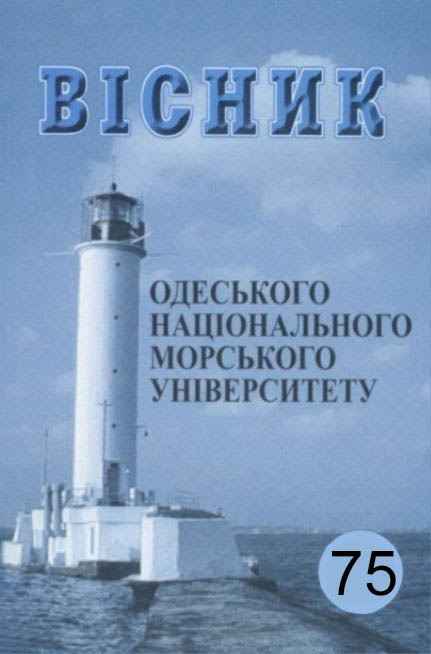Computation in noise regulation
Main Article Content
Abstract
Noise is a harmful factor that poses a threat to the health of workers in many professions in the maritime industry. Domestic labour protection legislation provides effective tools for regulating the parameters of industrial noise [1]. At the same time, objective processes of globalization of the world economy, integration of Ukraine into the global system of labour division increasingly require knowledge and application of international standards in the field of occupational health. In particular, this becomes relevant in the course of training specialists to work on ships of foreign shipping companies. From a hygienic point of view, noise is any unwanted sound or sound that does not carry useful information. In turn, sound, as a physical phenomenon, is a fluctuation in the pressure or density of a continuous medium, in particular air. Sound is characterized by the following physical parameters. Sound frequency ‒ the human auditory analyser perceives sound vibrations with a frequency ranging from 16 to 20 ·103 Hz. Sound intensity ‒ the work performed by a sound wave per unit time, referred to a unit of surface area normal to the direction of propagation of the sound wave, W/m2. Sound pressure is the root-mean-square value of atmospheric pressure that changes as a result of the passage of a sound wave, Pa. However, the use of absolute values of sound intensity or sound pressure in practical acoustics is unacceptable due to the action of the basic psychophysical law of Weber-Fechner, which forces the use of relative logarithmic parameters: logarithmic intensity level and logarithmic sound pressure level (SPL), which are measured in relative logarithmic units ‒ decibels (dB). The latter parameter is the main standardized parameter of industrial noise in domestic legislation, and the main hygienic principle of standardization is the limitation of sound pressure levels for different categories of work. Unlike domestic legislation, international legislation uses an approach that consists in standardizing the exposure dose, i.e. the sound pressure level in combination with the duration of exposure. In particular, this approach is the basis of the US Occupational Safety and Health Administration (OSHA) standard [2]. This standard establishes the relationship between the sound pressure level and the permissible noise exposure in tabular form and in the form of mathematical relation- ships containing exponential and logarithmic operands and are quite inconvenient for practical use ‒ determining the admissibility of working conditions. The task is compli- cated in proportion to the number of periods with different noise levels during the work shift. In view of this, it seems advisable to develop a computer program to automate calculations related to the application of the OSHA 29 CFR 1910.95 standard, what is the subject of this paper.
Article Details
References
2. 29 CFR 1910.95. Occupational noise exposure. (https://www.osha.gov/laws-regs/regulations/standardnumber/1910/1910.95). (In Inglish).
3. Yates W. David. Safety professional`s: reference and study guide. – NY: Tailor and Francis Group, LLC, 2011. 522 p. (In Inglish).
4. R.L. Brauer. Safety and Health for Engineers. – John Wiley & Sons, Inc., 2006. – 734 p.
5. J.T. Talty. Industrial Hygiene Engineering. ‒ Park Ridge, NJ: Noyes Data Corporation, 1988. ‒ 855 p.
6. F.R. Spellman. Industrial Hygiene. Lanham-Toronto-Oxford: Scarecrow Press, Inc., 2006. ‒ 369 p.
